Abstract
This psychiatric epidemiology study following the Mount St. Helens volcanic disaster revealed a significant morbidity for psychiatric disorders. The increased prevalence showed a dose response pattern in three population groups. The findings are reported as relative and attributable risk for the two exposed populations as compared to a control group. Patterns of significant risk are presented for sex, age, and for victims with pre-existing physical illness. The research utilized a new criteria-based interview schedule for the identification of psychiatric disorders. The methodology is reviewed in the context of the controversies and assumptions within the field of behavioral response to disaster stress. There are important implications for public health planning and intervention.
Full text
PDF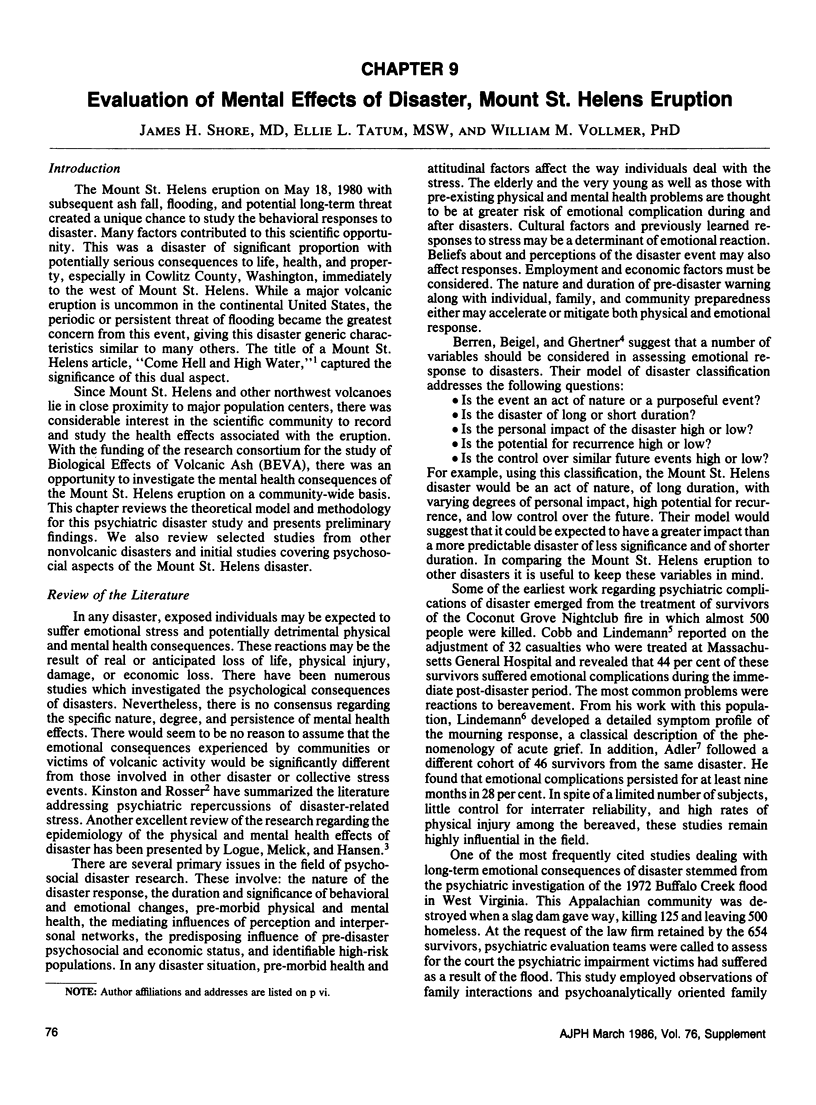
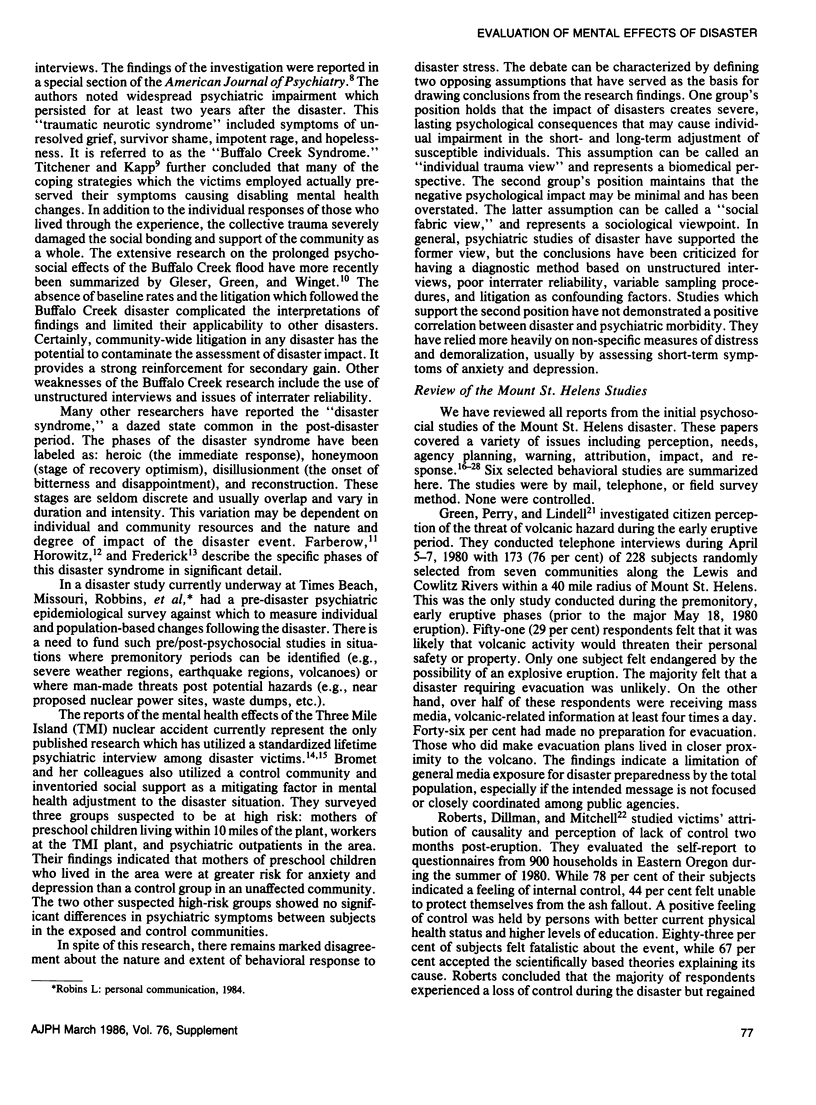
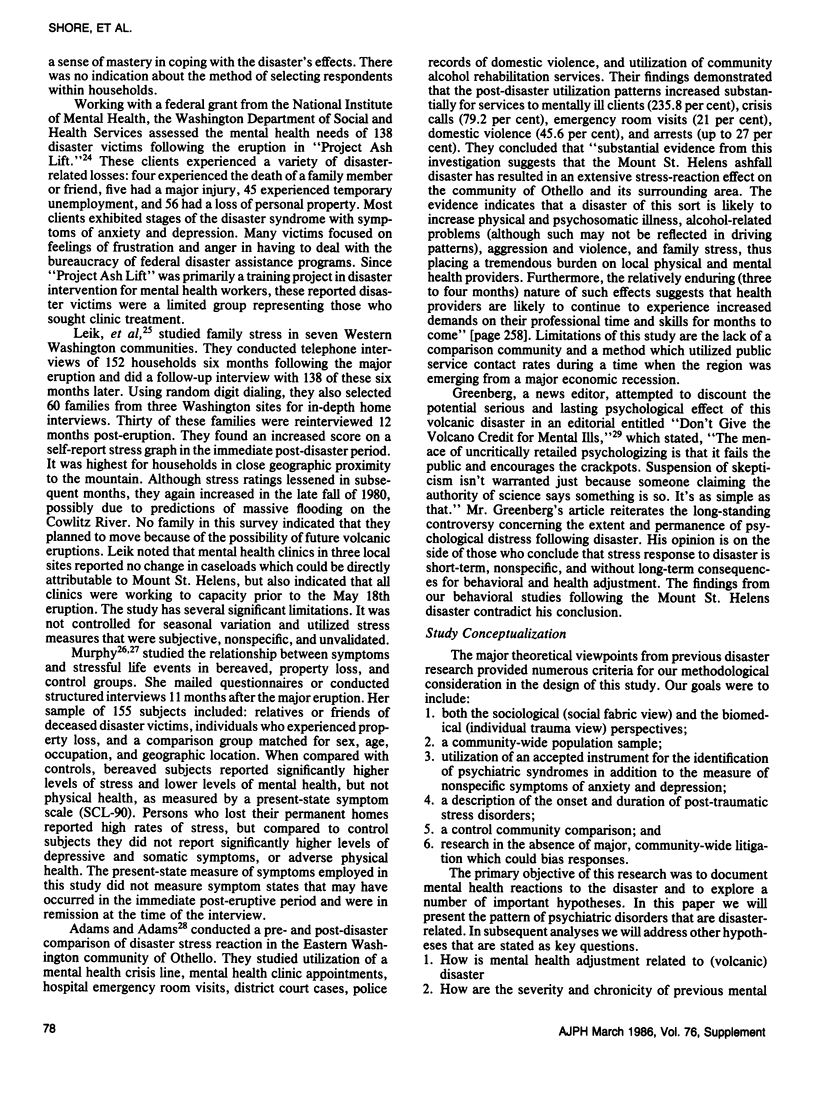
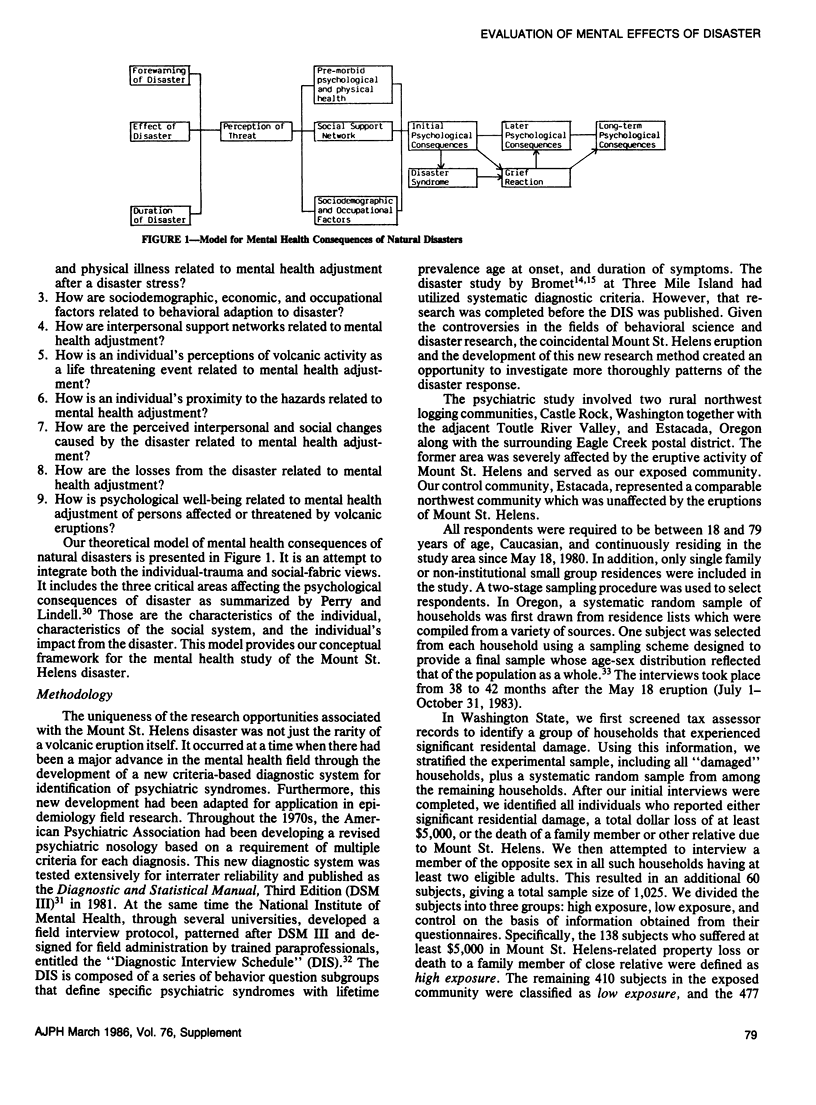
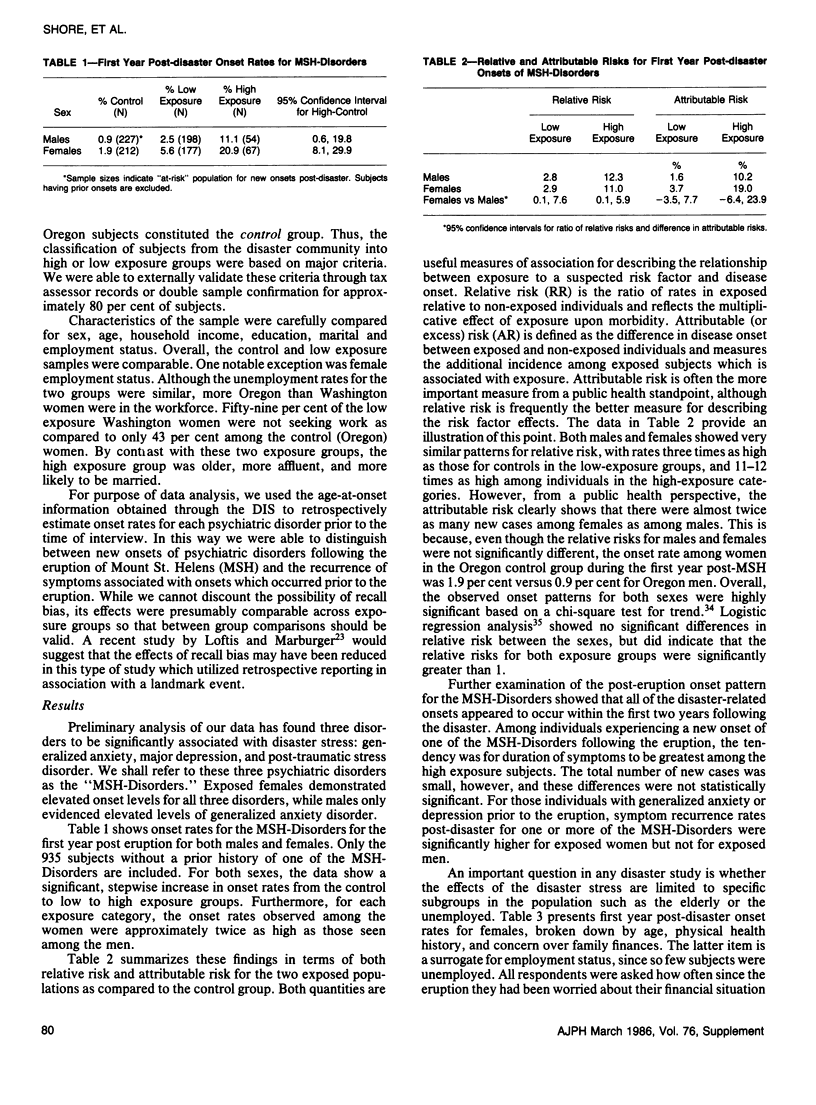
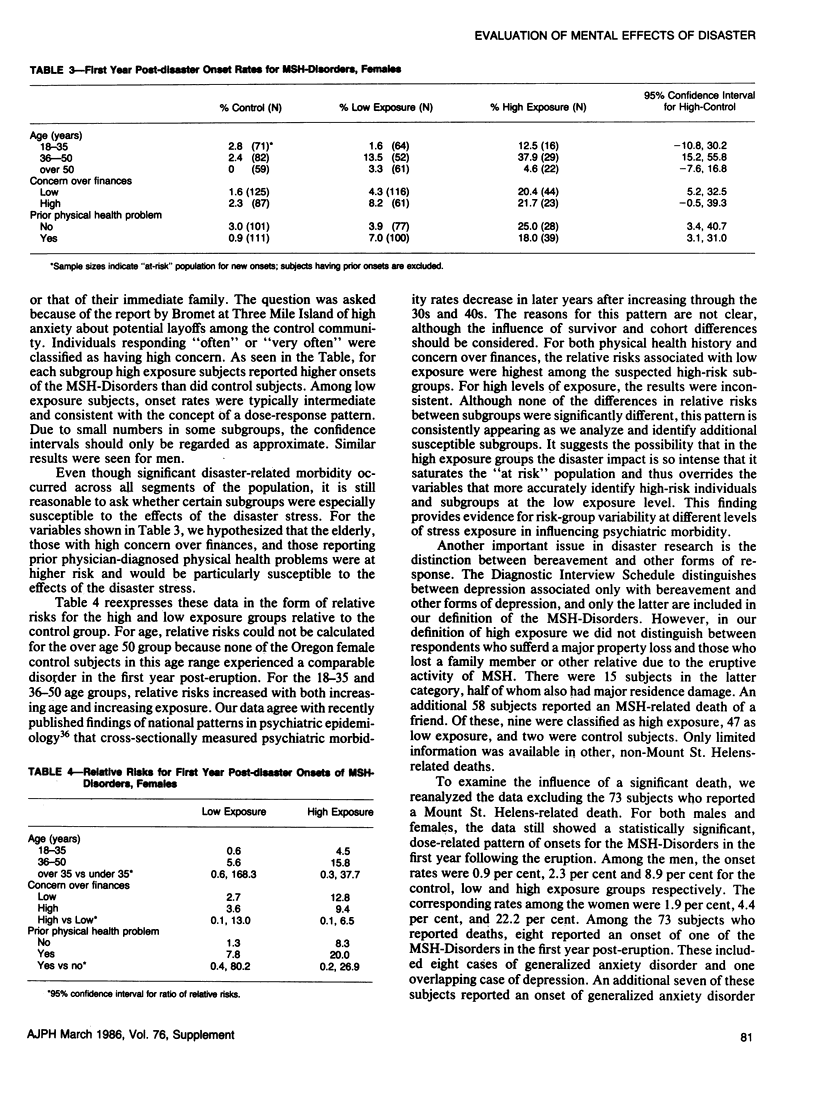
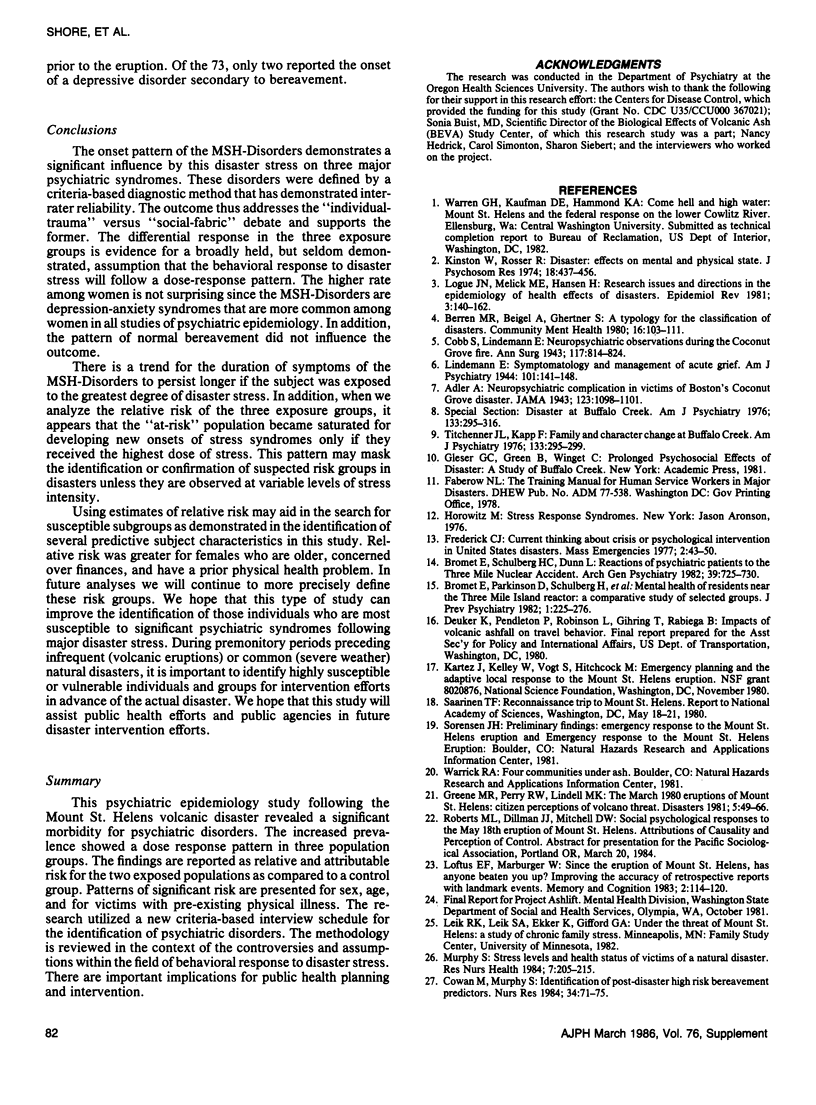
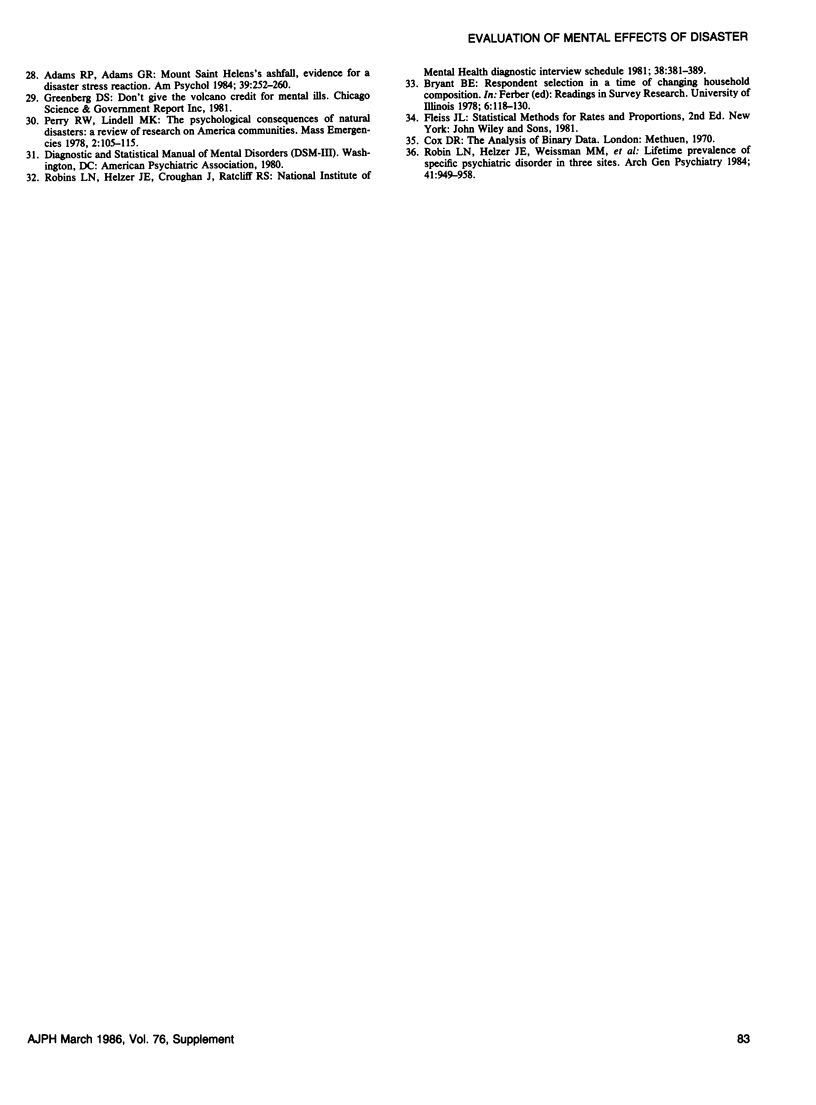
Selected References
These references are in PubMed. This may not be the complete list of references from this article.
- Adams P. R., Adams G. R. Mount Saint Helens's ashfall. Evidence for a disaster stress reaction. Am Psychol. 1984 Mar;39(3):252–260. doi: 10.1037//0003-066x.39.3.252. [DOI] [PubMed] [Google Scholar]
- Berren M. R., Beigel A., Ghertner S. A typology for the classification of disasters. Community Ment Health J. 1980 Summer;16(2):103–111. doi: 10.1007/BF00778582. [DOI] [PubMed] [Google Scholar]
- Bromet E., Schulberg H. C., Dunn L. Reactions of psychiatric patients to the Three Mile Island nuclear accident. Arch Gen Psychiatry. 1982 Jun;39(6):725–730. doi: 10.1001/archpsyc.1982.04290060069014. [DOI] [PubMed] [Google Scholar]
- Cobb S., Lindemann E. NEUROPSYCHIATRIC OBSERVATIONS. Ann Surg. 1943 Jun;117(6):814–824. doi: 10.1097/00000658-194311760-00004. [DOI] [PMC free article] [PubMed] [Google Scholar]
- Cowan M. E., Murphy S. A. Identification of postdisaster bereavement risk predictors. Nurs Res. 1985 Mar-Apr;34(2):71–75. [PubMed] [Google Scholar]
- Kinston W., Rosser R. Disaster: effects on mental and physical state. J Psychosom Res. 1974 Dec;18(6):437–456. doi: 10.1016/0022-3999(74)90035-x. [DOI] [PubMed] [Google Scholar]
- Loftus E. F., Marburger W. Since the eruption of Mt. St. Helens, has anyone beaten you up? Improving the accuracy of retrospective reports with landmark events. Mem Cognit. 1983 Mar;11(2):114–120. doi: 10.3758/bf03213465. [DOI] [PubMed] [Google Scholar]
- Logue J. N., Melick M. E., Hansen H. Research issues and directions in the epidemiology of health effects of disasters. Epidemiol Rev. 1981;3:140–162. doi: 10.1093/oxfordjournals.epirev.a036231. [DOI] [PubMed] [Google Scholar]
- Murphy S. A. Stress levels and health status of victims of a natural disaster. Res Nurs Health. 1984 Sep;7(3):205–215. doi: 10.1002/nur.4770070309. [DOI] [PubMed] [Google Scholar]
- Robins L. N., Helzer J. E., Weissman M. M., Orvaschel H., Gruenberg E., Burke J. D., Jr, Regier D. A. Lifetime prevalence of specific psychiatric disorders in three sites. Arch Gen Psychiatry. 1984 Oct;41(10):949–958. doi: 10.1001/archpsyc.1984.01790210031005. [DOI] [PubMed] [Google Scholar]
- Titchener J. L., Kapp F. T. Disaster at Buffalo Creek. Family and character change at Buffalo Creek. Am J Psychiatry. 1976 Mar;133(3):295–299. doi: 10.1176/ajp.133.3.295. [DOI] [PubMed] [Google Scholar]


